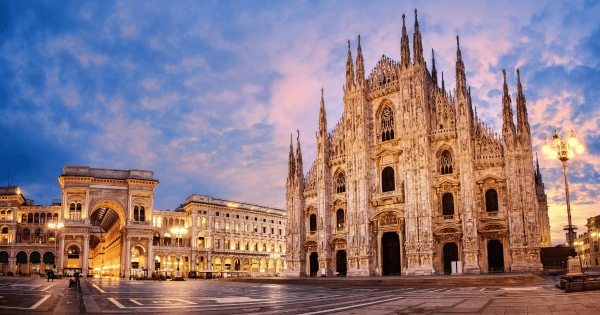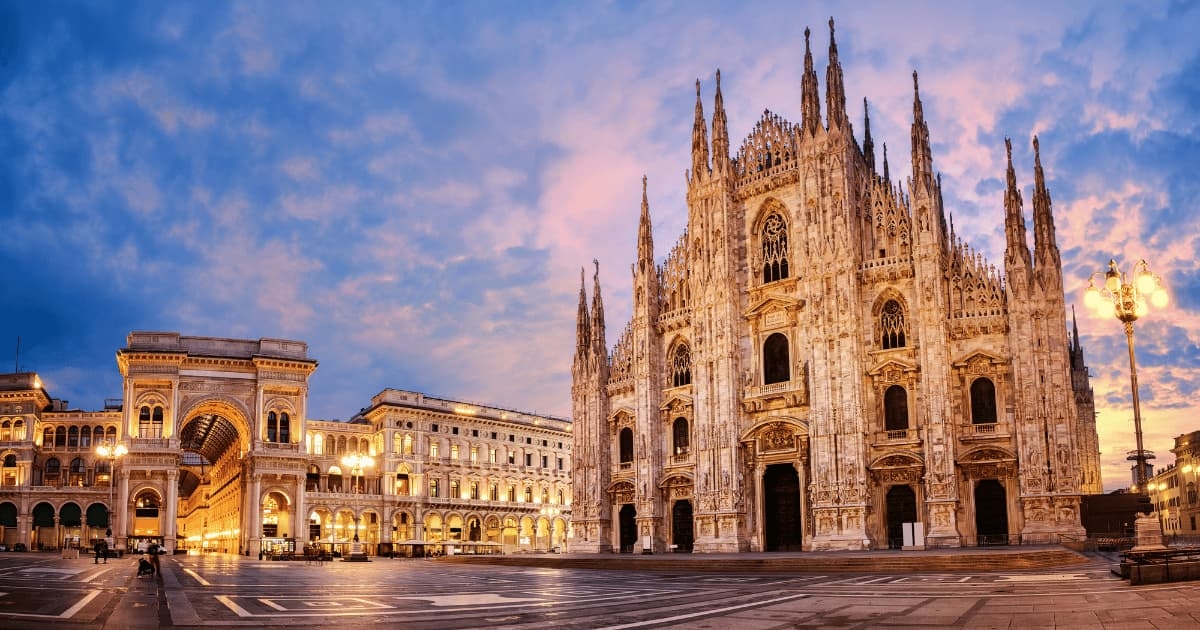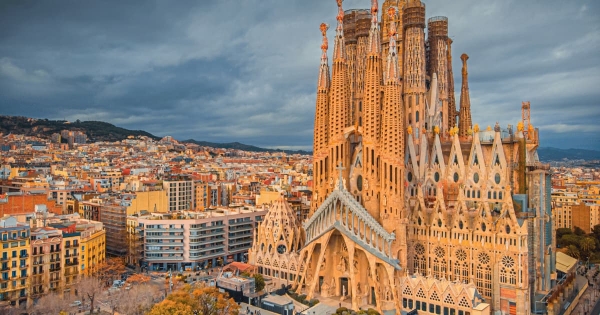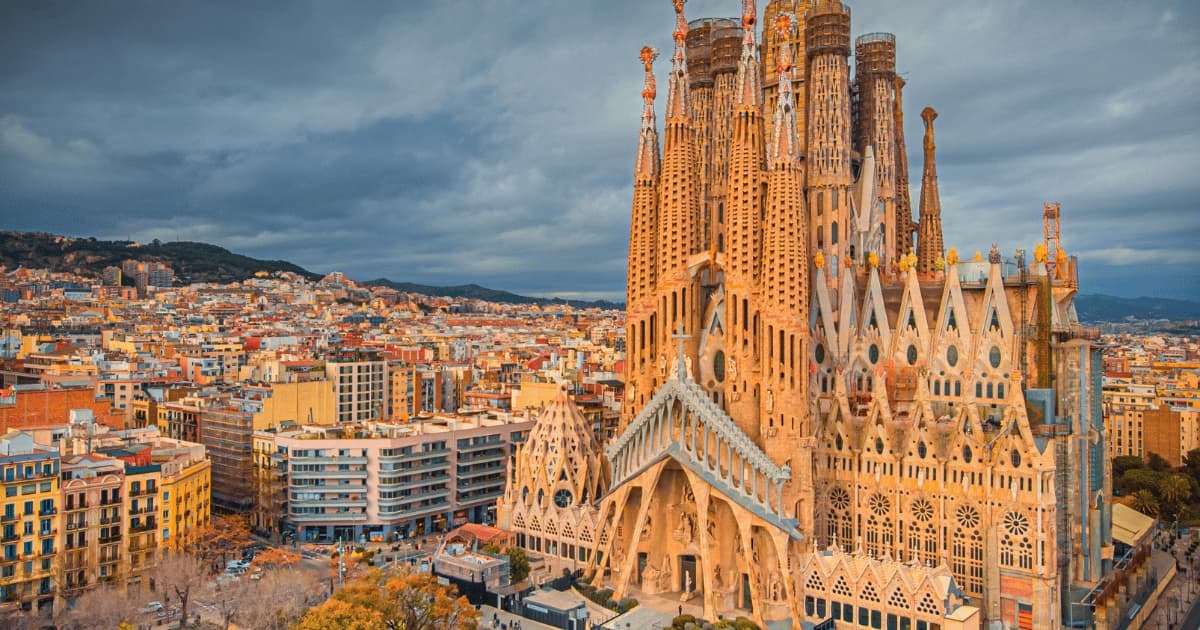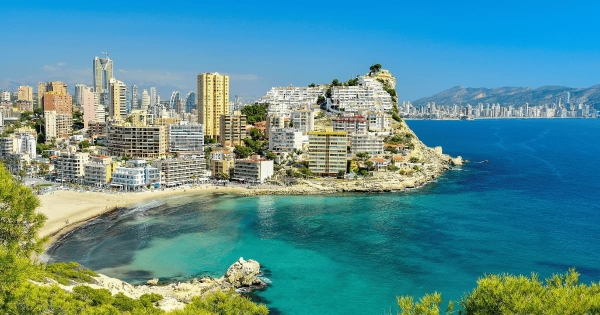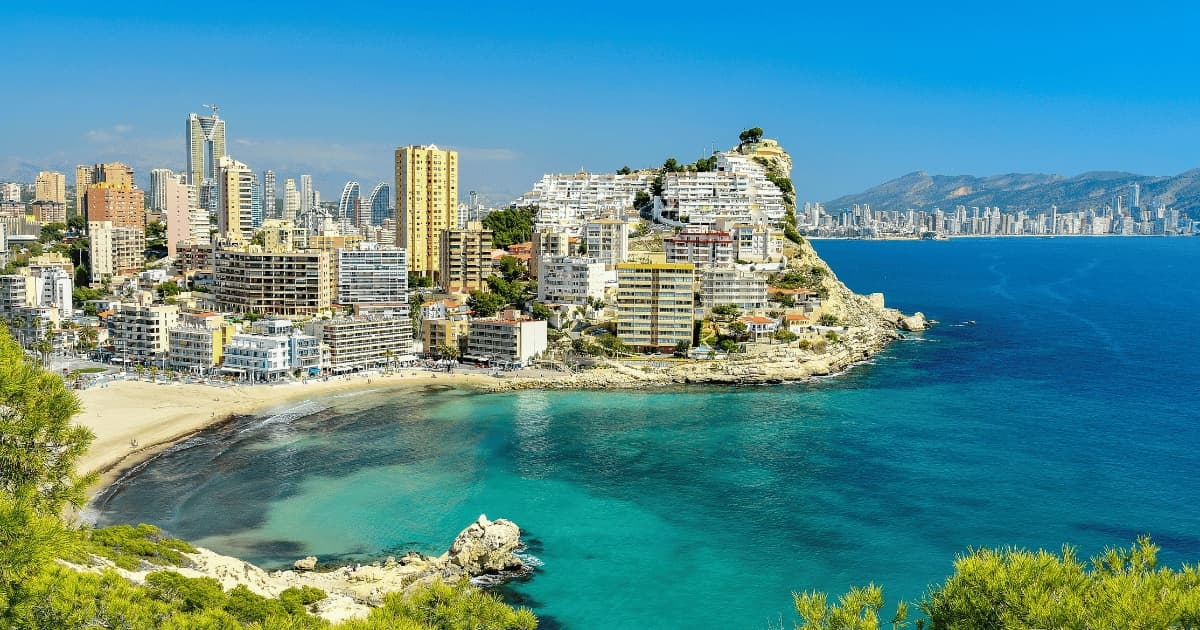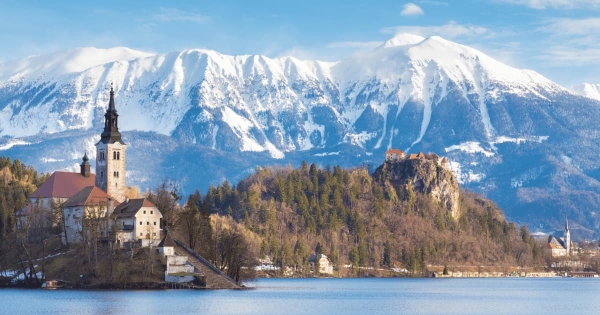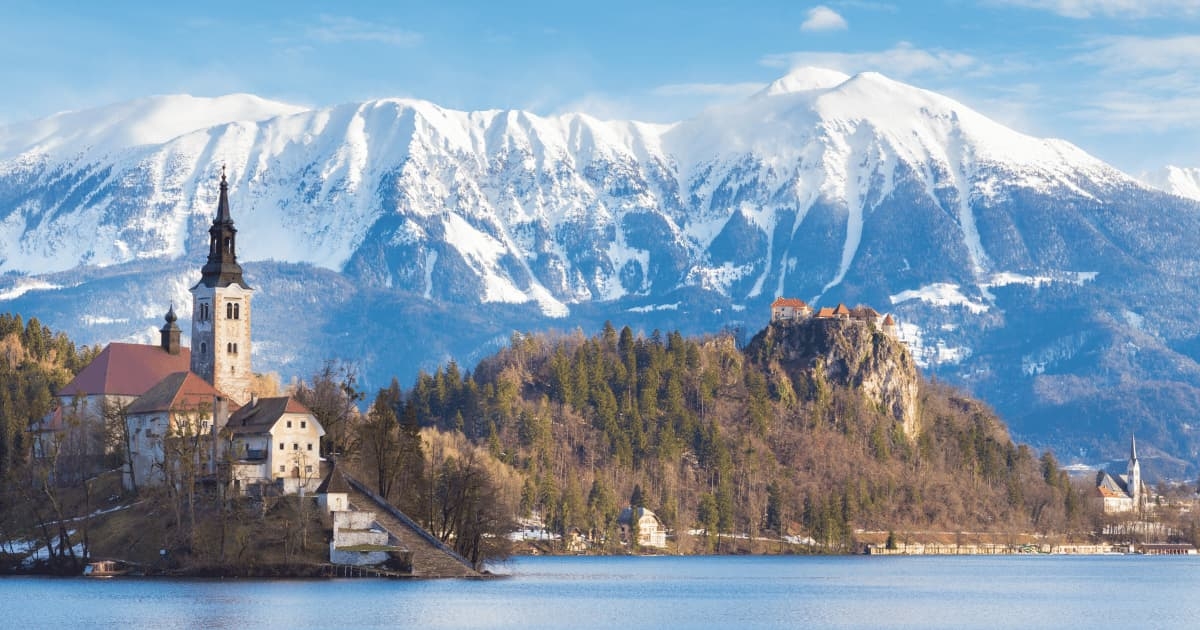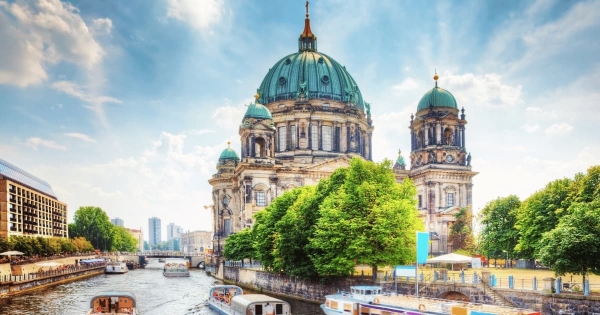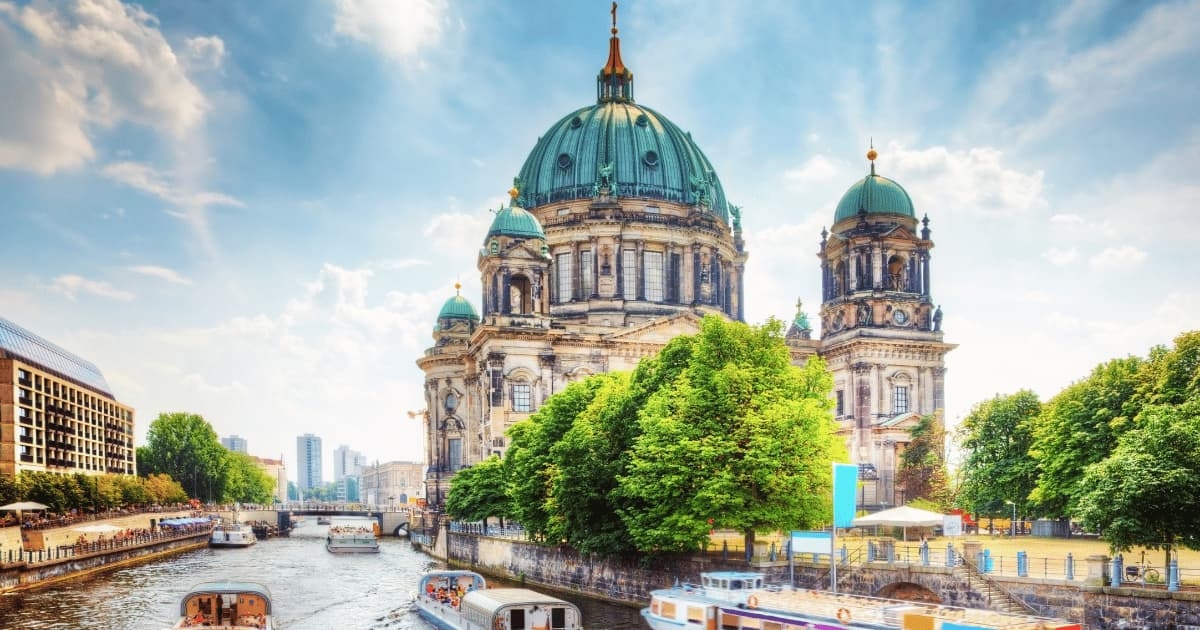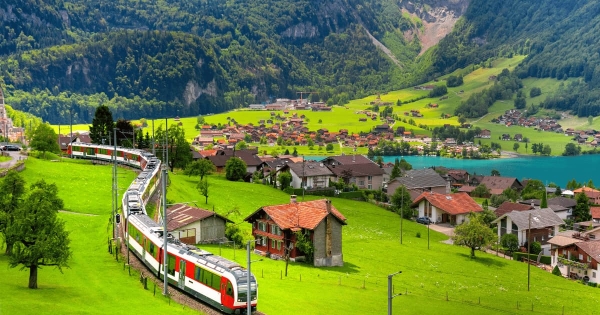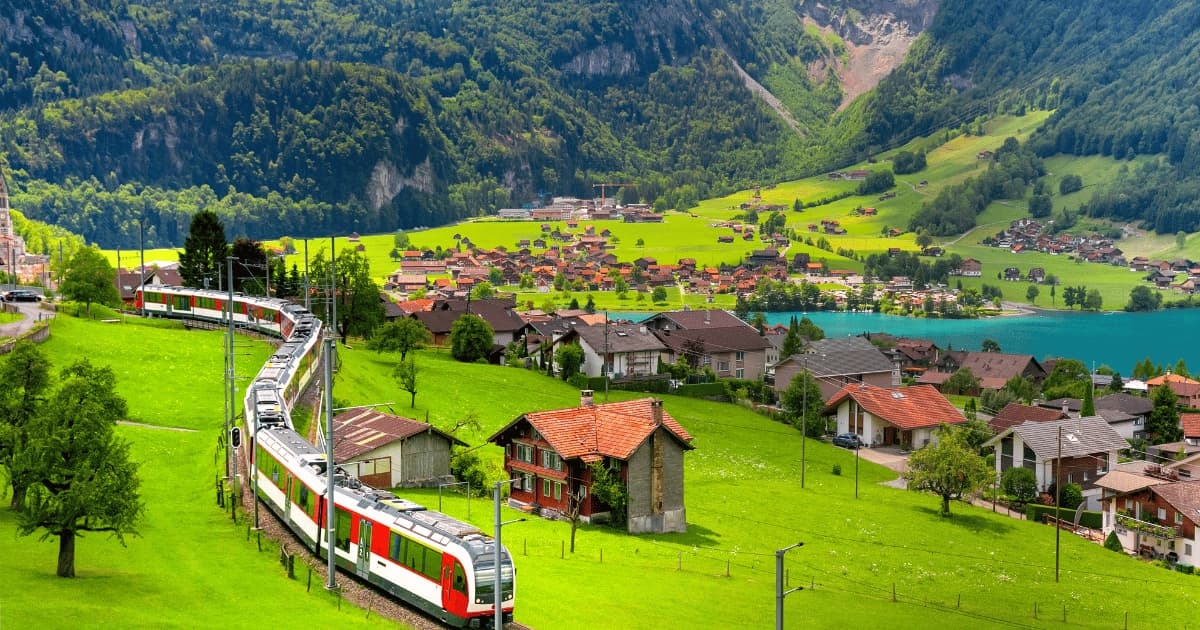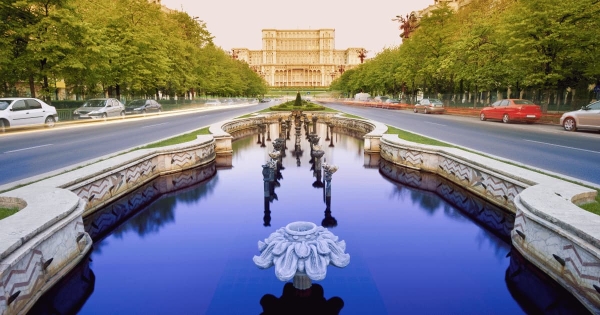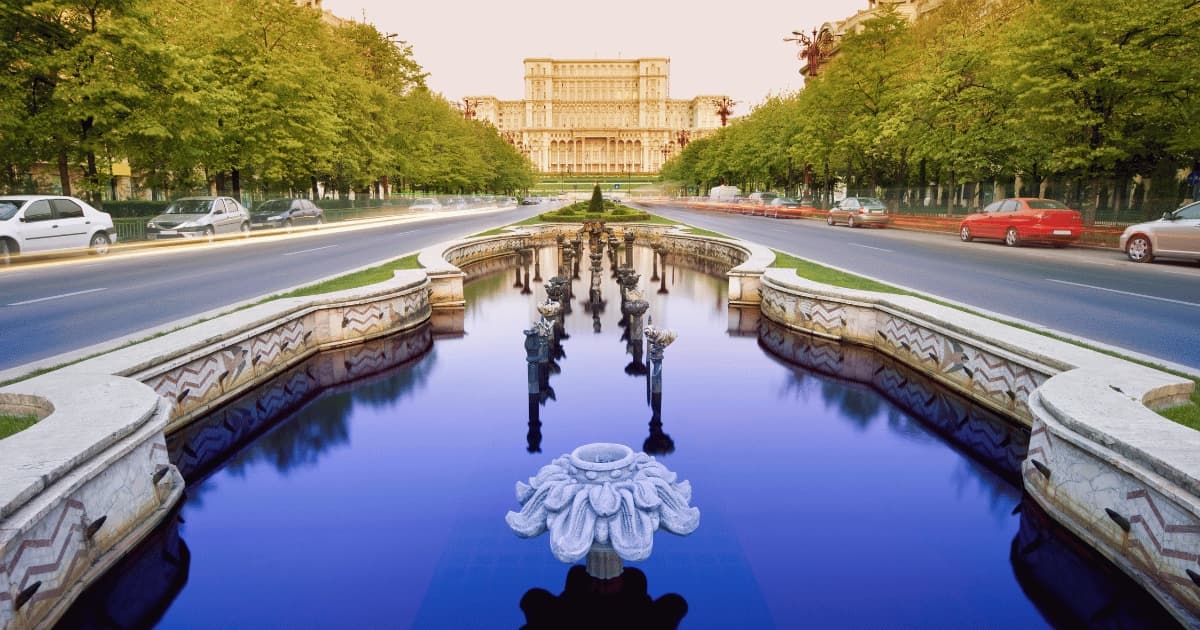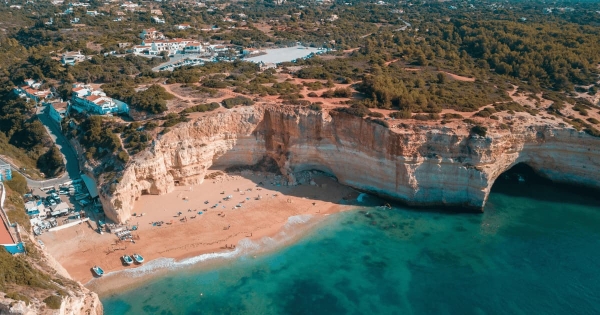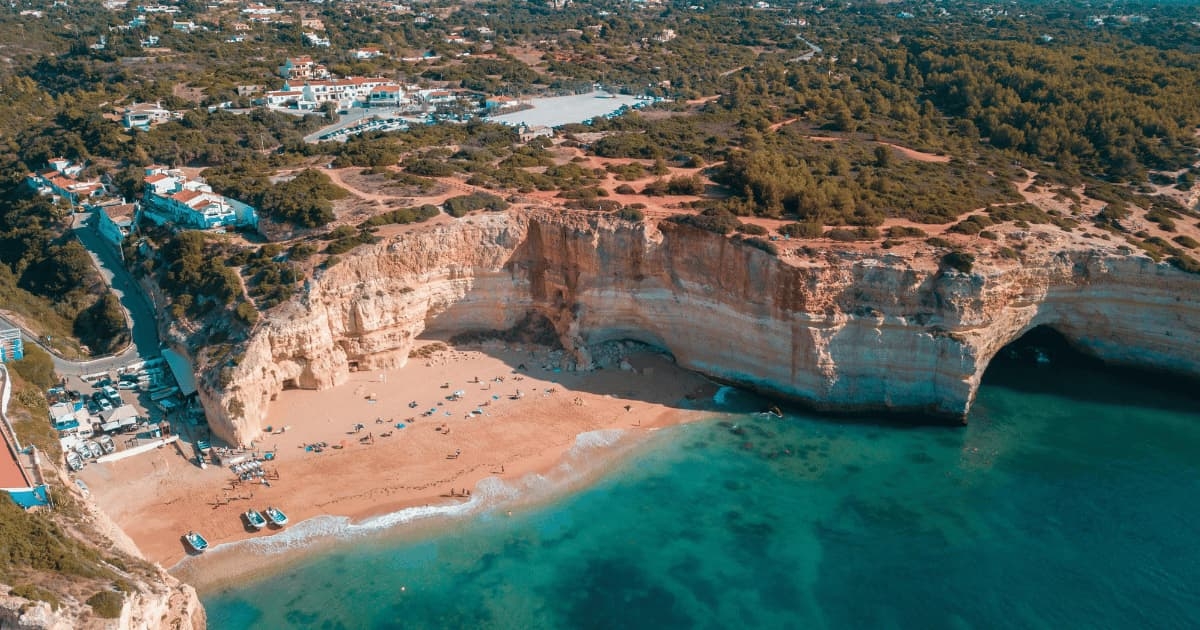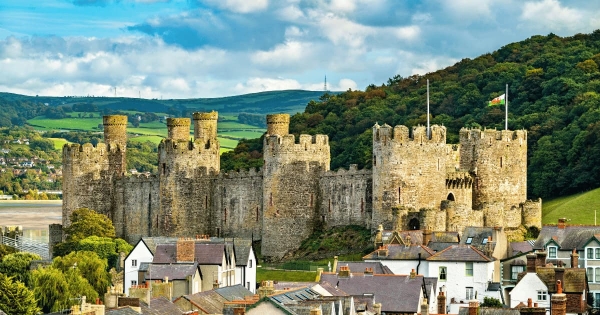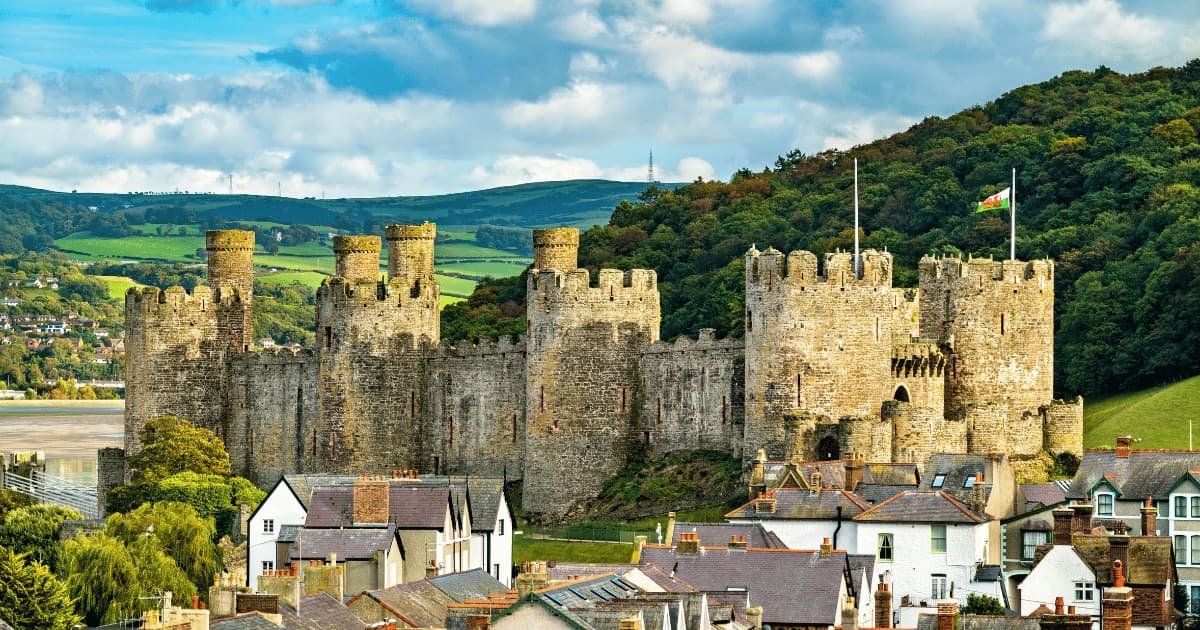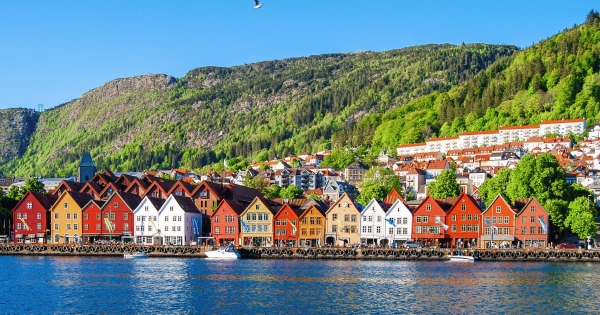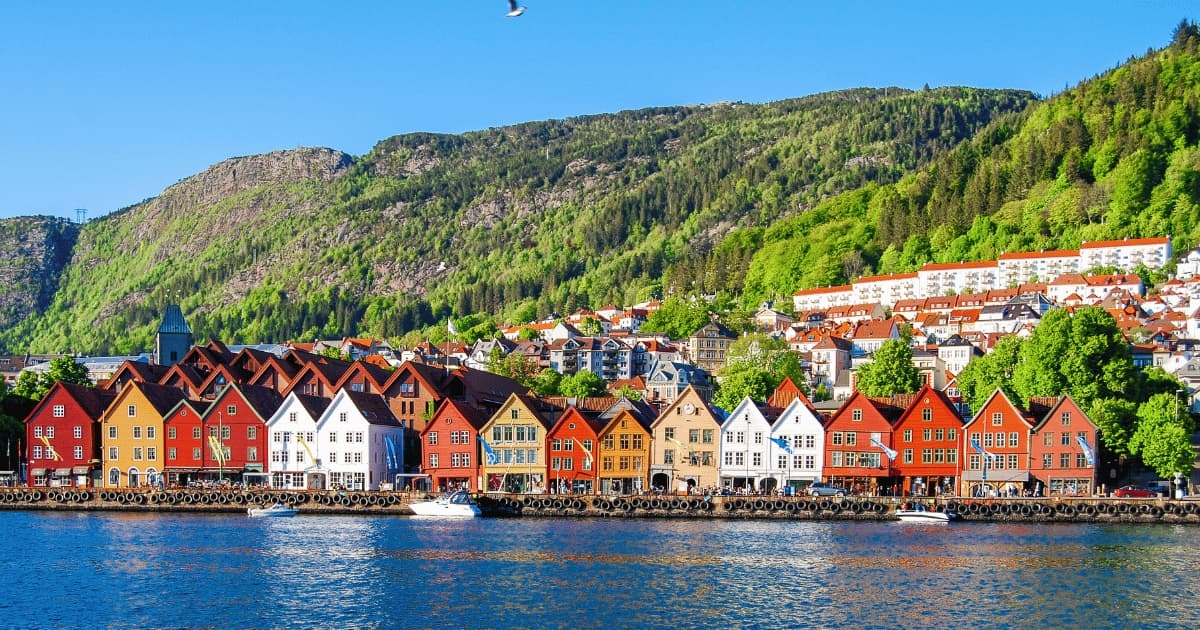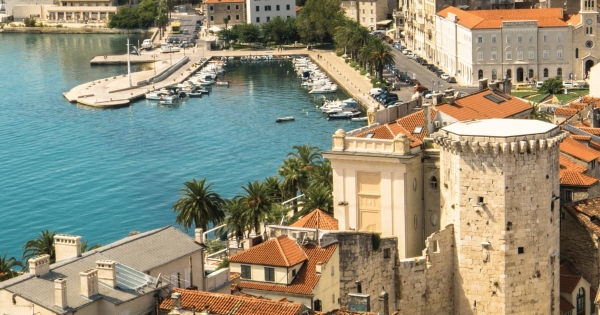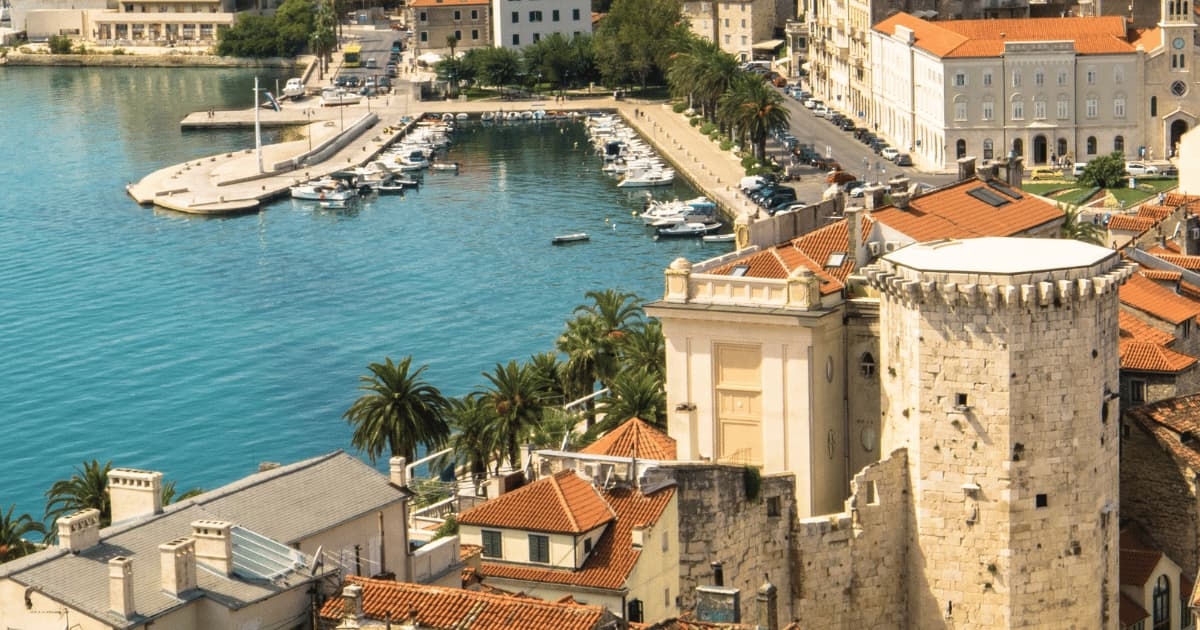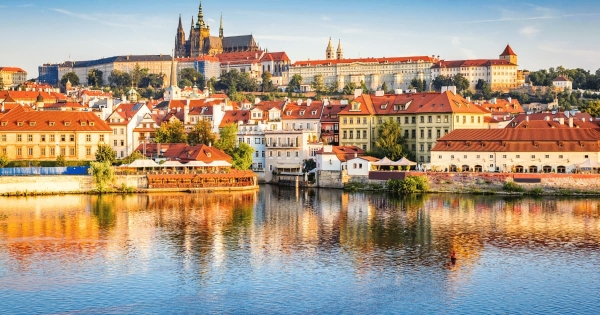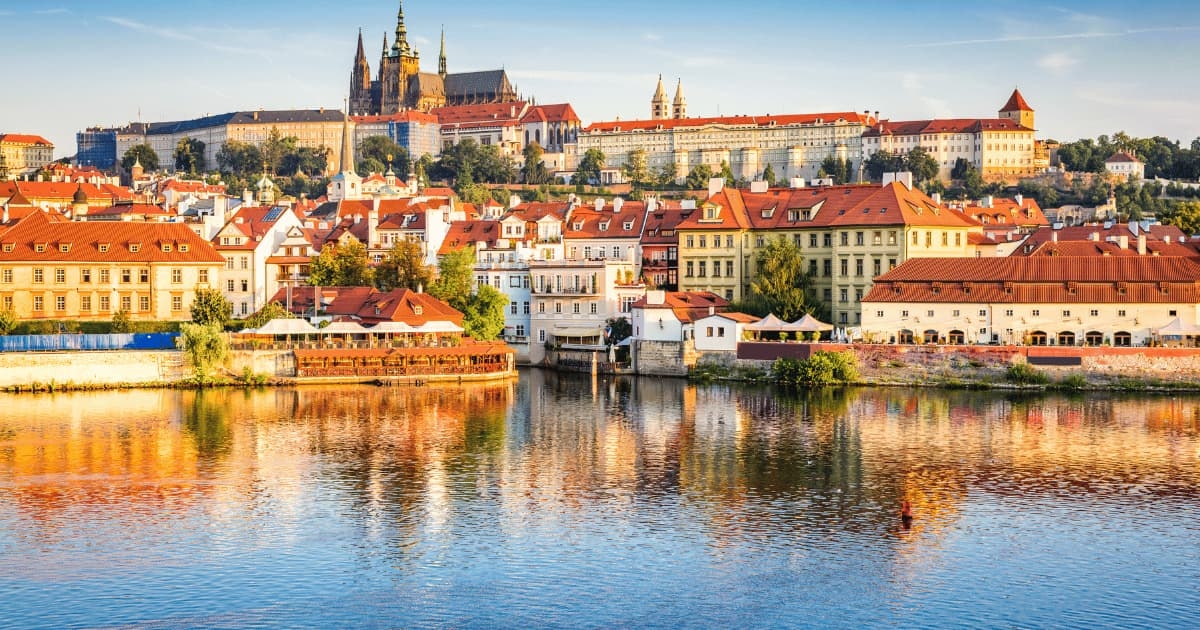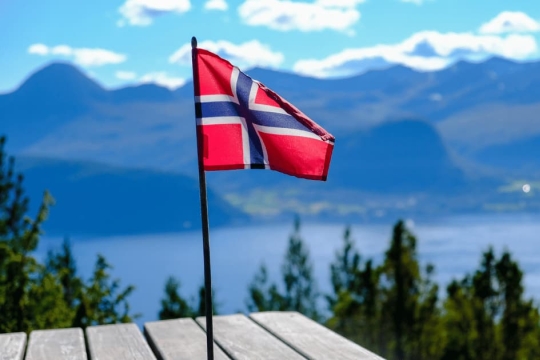Europe has long been a favorite for travelers, offering a blend of history, culture, and views that few places can match. From medieval towns to modern capitals, every country has something different to offer, making it easy to plan a trip that feels both rewarding and memorable. Whether you’re after art-filled cities, coastal escapes, or mountain adventures, the continent provides options for every kind of traveler.
With so many choices, narrowing down where to visit in Europe can be a daunting task. Some countries are home to world-famous landmarks and exciting cities, while others are better known for their natural beauty and slower pace. The good news is that you don’t need to see it all at once. By focusing on the destinations that truly stand out, you’ll make the most of your time and avoid the common tourist traps that can take away from the experience.
What Makes a Country One of the Best to Visit in Europe?
There’s no single formula for choosing where to go in Europe. What makes a destination stand out often depends on what kind of trip you want. Still, some common qualities can turn a country from just another stop into a highlight of your travels.
- Fascinating history: From the ruins of ancient Greece to medieval castles and Cold War landmarks, Europe’s layers of history are everywhere.
- Major cities worth exploring: Capitals like Rome, Paris, and Berlin offer world-class museums, fine dining, and cultural experiences that define Western civilization.
- Stunning landscapes: The Swiss Alps, the Scottish Highlands, and Iceland’s glaciers show Europe’s rugged beauty, while the Mediterranean coast offers beach life and golden light in the summer months.
- Variety of experiences: Ski resorts in the winter, island hopping in the summer, and small towns with fewer crowds in the shoulder seasons all add to the appeal.
- Cultural depth: From festivals and food markets to classical music and contemporary art, many cities offer ways to connect with the culture beyond just the high points.
- Ease of travel: Europe’s well-connected trains and budget flights make it possible to see several countries in a single trip without much hassle.
By keeping these factors in mind, it’s easier to understand why some places become favorite countries for travelers and why others are worth discovering with your own eyes.
1. Italy
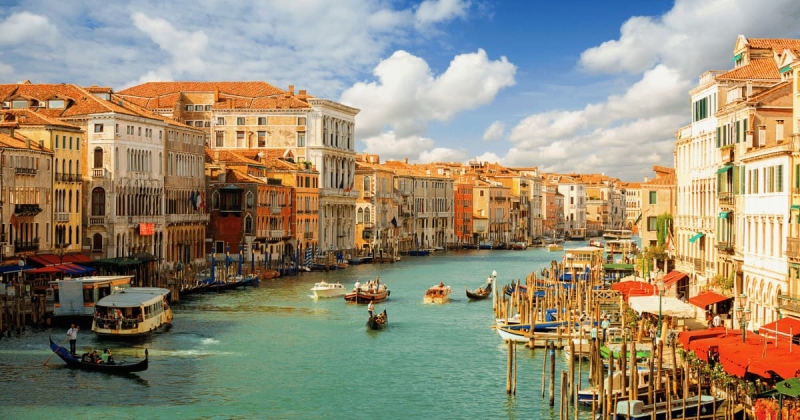
Italy is often the first country that comes to mind when people plan a trip to Europe, and for good reason. It blends ancient ruins, world-class art, and fabulous food with a setting that feels both timeless and fun. From the Roman Colosseum to the canals of Venice and the rolling hills of Tuscany, every region offers something different to travelers.
What makes Italy especially appealing is how easy it is to combine different experiences in a single trip. You can admire Renaissance masterpieces in Florence, relax on the Mediterranean coast, hike the Italian Alps, and still have time for pizza in Naples or wine tasting in Piedmont. It’s the kind of destination that rewards both first-time visitors and those who return again and again.
Top Things To Do in Italy
- Walk through history in Rome: The Colosseum, Roman Forum, and Vatican Museums are essential stops that bring ancient and religious history to life.
- Admire Renaissance art in Florence: From Michelangelo’s David to the Uffizi Gallery, Florence is one of the best cities in Europe for art lovers.
- Cruise Venice’s canals: A gondola ride may sound like a cliché, but it’s one of the most memorable ways to experience the city’s architecture and charm.
- Taste wine in Tuscany: Vineyard tours and tastings in Chianti or Montepulciano are a highlight for anyone who loves food and drink.
- Relax on the Amalfi Coast: Dramatic cliffs, colorful towns, and the Mediterranean climate make this coastline a traveler’s dream.
Best Places To Stay in Italy
- Budget: Hotel Nerva in Rome offers modern comfort in the heart of the historic center, steps from the Colosseum. Rooms average $221 to $806 per night.
- Mid-range: Hotel Santa Maria in Trastevere (Rome) is a peaceful option with a courtyard garden and easy access to local trattorias. Rates range from approximately $230 to $651 per night.
- Luxury: Belmond Hotel Caruso in Ravello sits high above the Amalfi Coast with an infinity pool and panoramic views. Rooms start at $2,410 to $5,125 per night.
What To Know Before Visiting Italy
Trains are the easiest way to move between major cities, but renting a car is the best choice for exploring smaller towns and wine regions. Summers can bring heavy crowds to the most visited cities, so consider traveling in spring or fall for fewer crowds and more comfortable weather. Many museums and historic sites are closed on Mondays, so plan your schedule accordingly.
2. France
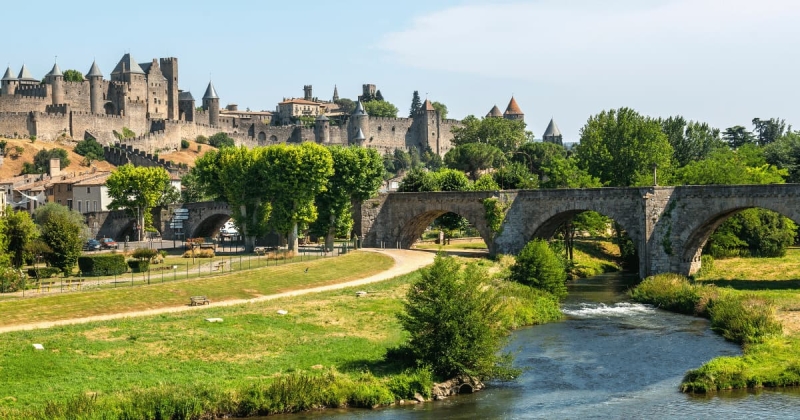
France has long been one of the most visited countries in the world, attracting travelers with its mix of cities, countryside views, and rich cultural heritage. Paris alone offers world-class museums, historic sites, and the unmistakable Eiffel Tower, but the country goes far beyond the capital. From the lavender fields of Provence to the vineyards of Bordeaux and the glamorous Mediterranean coast, France delivers variety at every turn.
What makes France stand out is how well it combines history with everyday life. You can walk medieval streets one day and relax at a seaside café the next. Whether you’re interested in fine dining, fashion, or simply watching the golden light fall over a quiet village, France offers countless ways to enjoy its character.
Top Things To Do in France
- See Paris from above: Climb the Eiffel Tower or head to Montmartre for sweeping views of the city’s rooftops.
- Visit world-class museums: The Louvre, Musée d’Orsay, and Centre Pompidou each offer different perspectives on art and history.
- Wander the lavender fields of Provence: Best seen in July, these fields create one of the most colorful landscapes in Europe.
- Enjoy the Mediterranean coast: The French Riviera is home to glamorous beaches, historic ports, and the charm of smaller towns like Menton.
- Taste wine in Bordeaux or Champagne: Vineyards across France are open for tours, offering the chance to sample wines at their source.
Best Places To Stay in France
- Budget: Hotel Henriette in Paris is a boutique hotel near the Latin Quarter with individually designed rooms, priced around $203 to $422 per night.
- Mid-range: La Mirande in Avignon is a historic townhouse turned hotel, perfect for exploring Provence. Rates average $453 to $1,232 per night.
- Luxury: Hotel du Cap-Eden-Roc in Antibes is a legendary Riviera property with a private bay and elegant suites. Prices may vary depending on their partners, but roughly start at about $1,200 per night.
What To Know Before Visiting France
France is well-connected by high-speed trains, making it easy to travel between regions without flying. The best time to visit depends on your plans: spring and fall are ideal for fewer crowds, while summer brings festivals but also higher prices. In rural areas, restaurants may close between lunch and dinner hours, so check ahead to avoid surprises.
3. Spain
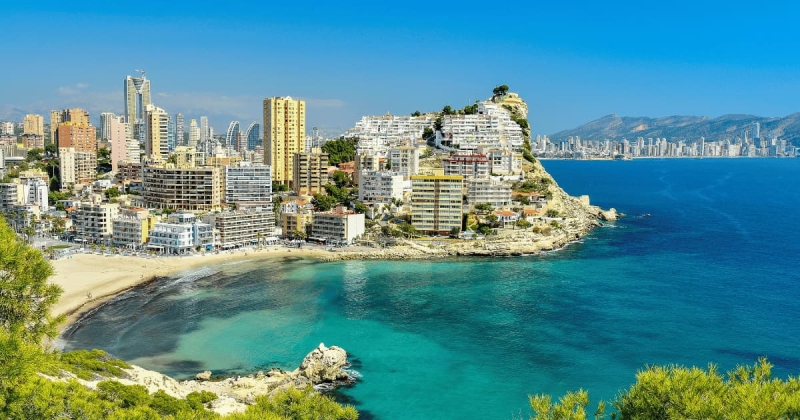
Spain is a Mediterranean country where history, food, and lively cities come together in a way that feels endlessly appealing. From the modern energy of Barcelona to the Moorish palaces of Andalusia and the relaxed pace of the Canary Islands, Spain offers an incredible range of experiences. It’s a destination that features famous attractions, as well as smaller towns and lesser-known islands, where life moves at a slower pace.
The country is also one of the best for travelers who love both city life and the outdoors. You can spend mornings in world-class museums, afternoons at the beach, and evenings enjoying tapas in a bustling square. With its Mediterranean climate, Spain is a year-round option—though each season brings its own character, from warm summer nights on the coast to quiet winter months in the interior.
Top Things To Do in Spain
- See Gaudí’s architecture in Barcelona: The Sagrada Família and Park Güell are some of the most beautiful works of modern design in Europe.
- Walk through history in Andalusia: Visit the Alhambra in Granada and the Mezquita in Córdoba for a glimpse into Spain’s Islamic past.
- Relax in the Canary Islands: These islands are known for crystal-clear waters, black sand beaches, and dramatic volcanic landscapes.
- Experience Madrid’s art triangle: The Prado, Reina Sofía, and Thyssen-Bornemisza museums hold masterpieces spanning centuries.
- Celebrate with the locals: From La Tomatina to Semana Santa, Spain’s festivals are some of the most exciting in Europe.
Best Places To Stay in Spain
- Budget: Casa Gracia in Barcelona is a stylish hostel with private rooms near Passeig de Gràcia. Prices average $110 to $327 per night.
- Mid-range: Hotel Amadeus & La Musica in Seville combines a central location with a rooftop terrace offering views of the cathedral. Rates range from $169 to $502 per night.
- Luxury: Marbella Club Hotel on the Costa del Sol offers beachfront villas and lush gardens, with rates starting around $555 to $2,001 per night.
What To Know Before Visiting Spain
Meal times in Spain tend to run later than in many other European countries—lunch often begins around 2 pm, and dinner can be as late as 9 or 10 pm. Public transportation is reliable in major cities, but renting a car is the best way to explore rural regions and smaller towns. Summers on the Mediterranean coast can be crowded, so consider visiting during the shoulder seasons for fewer crowds and milder weather.
4. Greece

Greece is a country where ancient history and island life meet in memorable ways. From the ruins of Athens to the quiet charm of the lesser-known islands, it offers travelers the chance to connect with both the origins of Western civilization and the laid-back pace of the Mediterranean. The country is as well known for its archaeological sites as it is for its beach life, making it a versatile choice for many different types of trips.
One of Greece’s strengths is variety. You can stand before the Parthenon in Athens, sail between the Greek islands, explore mountain villages, or simply enjoy fresh seafood by the water. While the most visited islands, such as Santorini and Mykonos, draw large crowds, there are dozens of smaller islands with fewer tourists that also capture just as much beauty.
Top Things To Do in Greece
- Step back in time in Athens: The Acropolis and its temples are among the most important ancient ruins in the world.
- Sail through the Greek islands: Island hopping gives you a mix of lively nightlife, quiet beaches, and crystal clear waters.
- Watch the sunset in Santorini: The villages of Oia and Imerovigli are known for sunsets that transform the island’s whitewashed houses.
- Discover Crete’s rugged beauty: Hike the Samaria Gorge or explore smaller towns that feel far from the tourist crowds.
- Visit Delphi: Once considered the center of the world in ancient Greece, this UNESCO World Heritage Site is set against dramatic mountain landscapes.
Best Places To Stay in Greece
- Budget: City Circus Athens is a boutique hostel with private rooms, set in a restored neoclassical building near the old town. Rooms average $56 to $208 per night.
- Mid-range: Strogili Hotel in Oia, Santorini, offers cliffside views with suites featuring private balconies. Rates typically range from $109 to $278 per night.
- Luxury: Phaea Blue offers private villas with infinity pools overlooking the Mediterranean coast, starting at $446 per night.
What To Know Before Visiting Greece
Public ferries connect most of the islands, but schedules can vary depending on the season. The summer months bring hot weather and heavy crowds, especially on the most famous islands, while May, June, and September are ideal times to visit with warm weather and fewer crowds. When visiting religious sites, modest dress is expected; covering your shoulders and knees shows respect for local customs.
5. Germany
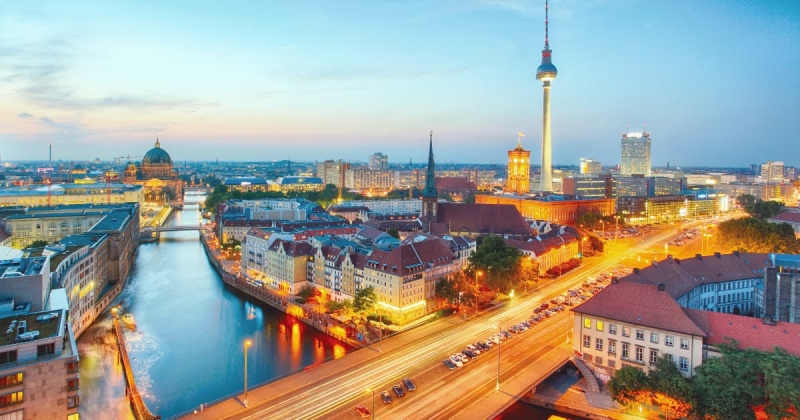
Germany is one of Europe’s great country destinations for travelers interested in both history and modern culture. From Berlin’s Cold War landmarks to Bavaria’s fairy-tale castles, it’s a place where every region tells a different story. The country boasts a fascinating history, contemporary design, world-class museums, and cities that are as forward-looking as they are rooted in tradition.
Germany also offers beauty, from the Rhine Valley’s vineyards to the Black Forest and the Bavarian Alps. Whether you’re interested in visiting major cities or smaller towns, the variety of experiences makes Germany an easy country to enjoy more than once. It’s also one of the most accessible in Europe thanks to its efficient rail network.
Top Things To Do in Germany
- Walk along the Berlin Wall: Visit the East Side Gallery to see murals painted on one of the largest remaining sections.
- Tour Neuschwanstein Castle: This 19th-century castle in Bavaria looks like it was lifted straight from a storybook.
- Sip wine in the Rhine Valley: Vineyards line the riverbanks, and river cruises offer scenic views of castles and villages.
- Spend a night in Munich during Oktoberfest: Germany’s most famous festival is a celebration of beer, music, and Bavarian traditions.
- Explore the Black Forest: Dense woodlands, small villages, and scenic hiking trails make this region perfect for outdoor lovers.
Best Places To Stay in Germany
- Budget: Circus Hostel in Berlin is stylish, well-located, and offers both dorms and private rooms. Prices range from $41 to $297 per night.
- Mid-range: Hotel Torbräu in Munich is a family-run property in the old town, close to Marienplatz. Rates typically range from $256 to $847 per night.
- Luxury: Schloss Elmau in Bavaria is a luxury spa retreat in the Alps, with fine dining and access to ski resorts. Rooms start at $866 to $1,868 per night.
What To Know Before Visiting Germany
Germany’s cities and regions are well connected by Deutsche Bahn’s high-speed trains, but booking in advance helps with cost savings. Winters are cold and often best for Christmas markets and skiing in the Alps, while summer months are ideal for festivals and outdoor activities. Many shops close on Sundays, especially in smaller towns, so plan accordingly.
6. Switzerland
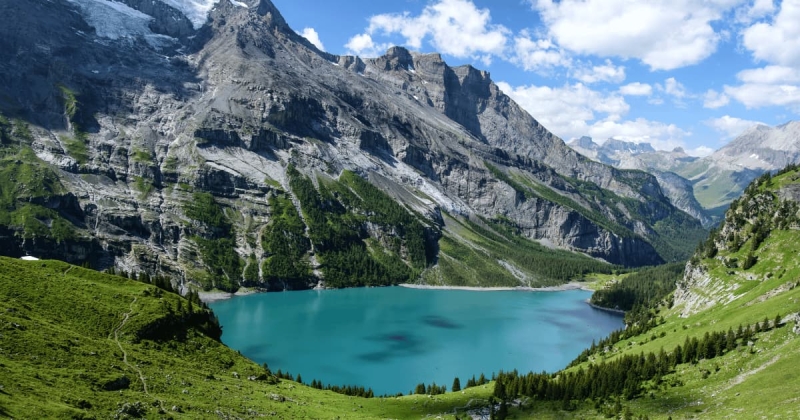
Switzerland is a favorite country for travelers who love both natural beauty and precision in everyday details. Known for the Swiss Alps, crystal-clear lakes, and small towns that feel untouched by time, it offers some of the most notable landscapes in Europe. Beyond its stunning views, Switzerland is also home to cities like Zurich and Geneva, where modern life seamlessly blends with history, art, and fine dining.
The country is especially appealing to those who enjoy outdoor activities. In the winter months, it’s one of the top places in the world for skiing, while the summer months bring hiking, cycling, and boat rides across alpine lakes. It’s also a place where smaller towns and villages offer just as much charm as the larger cities, making it rewarding for both quick trips and longer stays.
Top Things To Do in Switzerland
- Ski in the Swiss Alps: Resorts like Zermatt and St. Moritz are world famous for their slopes and après-ski experiences.
- Ride the Glacier Express: This scenic train links Zermatt and St. Moritz, crossing mountains, valleys, and viaducts along the way.
- Visit Jungfraujoch: Known as the “Top of Europe,” this high-altitude station offers views of glaciers and snow-capped peaks.
- Stroll through Lucerne’s old town: Wooden bridges, medieval walls, and lake views make it one of the most beautiful cities in Switzerland.
- Sail on Lake Geneva: A relaxing way to see vineyards, castles, and the Alps rising behind the water.
Best Places To Stay in Switzerland
- Budget: Hotel Marta in Zurich offers modern rooms near the Old Town and main train station, with rates ranging from $198 to $365 per night.
- Mid-range: Hotel des Balances in Lucerne combines lake views with a historic building in the heart of the old town. Prices typically range from $317 to $711 per night.
- Luxury: Badrutt’s Palace Hotel in St. Moritz is a landmark property with lake views, fine dining, and easy ski access. Rooms start at about $1,040 to $2,585 per night.
What To Know Before Visiting Switzerland
Public transport is efficient, with trains, boats, and cable cars making even remote areas accessible. The Swiss franc is the local currency, though euros are sometimes accepted in tourist spots. Switzerland is one of the more expensive countries in Europe, so budgeting for food and accommodation is crucial. The best time to visit depends on your plans—ski resorts shine in the winter months, while summer is ideal for hiking and enjoying alpine lakes.
7. Austria
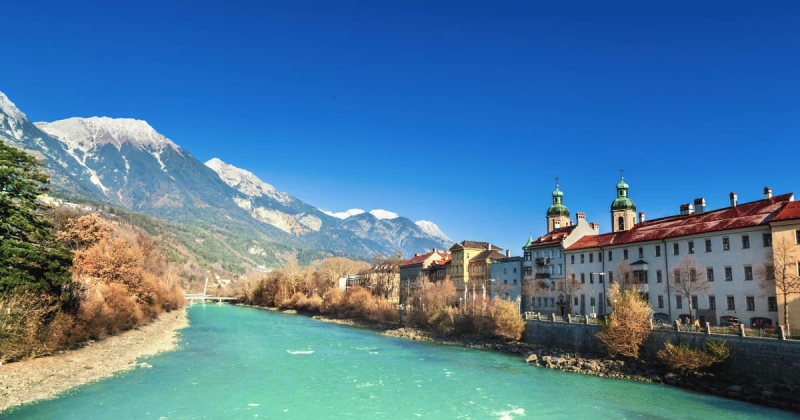
Austria is a country that combines refined culture with expansive mountains. Vienna, its capital, is a hub of classical music, art, and world-class museums, while Salzburg captures the charm of Baroque architecture and the legacy of Mozart. Beyond the cities, the Austrian Alps draw travelers year-round, offering ski resorts in the winter and hiking trails in the summer months.
The balance between lively cities and smaller towns makes Austria a rewarding place to visit. You can spend mornings admiring imperial palaces and afternoons sipping coffee in historic cafés, then head into the mountains for fresh air and rugged beauty. It’s a destination where both history and nature are always within easy reach.
Top Things To Do in Austria
- Walk Vienna’s historic center: St. Stephen’s Cathedral, the Hofburg Palace, and the Ringstrasse show the grandeur of Western civilization.
- Listen to a concert in Salzburg: The city is known for its music festivals and its role as Mozart’s birthplace.
- Take the train to Hallstatt: This lakeside village is one of Europe’s most beautiful smaller towns.
- Ski in the Austrian Alps: Resorts like Kitzbühel and Innsbruck are favorites for both skiing and après-ski culture.
- Visit Schönbrunn Palace: Once the summer residence of the Habsburgs, this palace offers stunning gardens and lavish interiors that bring the Middle Ages and beyond to life.
Best Places To Stay in Austria
- Budget: Meininger Hotel Vienna Downtown Franz offers simple yet comfortable rooms in central Vienna, priced between $46 and $154 per night.
- Mid-range: Hotel Elefant in Salzburg sits in a historic building just off the old town’s main street. Rates usually range from $175 to $399 per night.
- Luxury: Hotel Sacher Vienna is a landmark property known for its elegant rooms and the famous Sachertorte chocolate cake. Rooms start at about $804 to $1,721 per night.
What To Know Before Visiting Switzerland
Austria’s rail system is excellent, making it easy to combine city visits with trips to the Alps. Winters are best for skiing, while spring and fall are ideal for city travel with fewer crowds. Many restaurants and shops close on Sundays, especially outside the larger cities, so it’s good to plan ahead. A cultural tip: café culture in Austria is about slowing down, so don’t feel rushed to leave after ordering a coffee.
8. Portugal
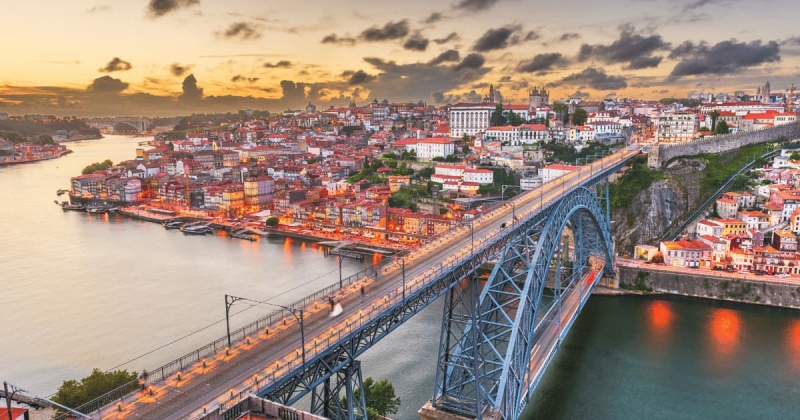
Portugal is one of the best European countries to visit if you want to experience cities, coastal beauty, and rich history. Lisbon charms travelers with its hilltop views, tiled facades, and lively neighborhoods, while Porto is famous for its riverside setting and wine cellars. Beyond the cities, the Algarve’s beaches, the west coast surf towns, and the quiet countryside offer plenty of variety.
What makes Portugal appealing is how approachable it feels. Smaller than many of its neighbors, it’s easy to travel around in a short time and still see a lot. The Mediterranean climate keeps it pleasant year-round, while its food, from seafood stews to custard tarts, makes dining an experience in itself. With both major cities and smaller towns worth visiting, Portugal gives travelers a lot of choice without feeling overwhelming.
Top Things To Do in Portugal
- Ride the tram in Lisbon: The iconic yellow trams wind through narrow streets and give a great introduction to the city.
- Taste wine in Porto: Visit the cellars across the Douro River to sample Portugal’s most famous export.
- Relax on Algarve beaches: Known for golden cliffs and crystal clear waters, this is one of Europe’s best spots for beach life.
- Surf the west coast: Towns like Ericeira and Nazaré are known for great waves, from beginner spots to record-breaking swells.
- Explore Sintra’s palaces: Just outside Lisbon, the colorful Pena Palace and surrounding forests feel like stepping into another world.
Best Places To Stay in Portugal
- Budget: Lisbon Destination Hostel, located inside Rossio train station, combines quirky design with central convenience. Rates average $56 to $404 per night.
- Mid-range: Torel Palace Porto offers boutique-style rooms in restored historic buildings. Prices usually run $246 to $853 per night.
- Luxury: Vila Vita Parc in the Algarve sits on a clifftop with private beach access, fine dining, and lush gardens. Rooms start at about $331 to $1,204 per night.
What To Know Before Visiting Portugal
Public transport makes it easy to explore cities, but renting a car is the best way to see the Algarve and smaller towns. The best time to visit is during the shoulder seasons of spring and fall, when the weather is warm but the crowds are lighter. English is widely spoken in tourist areas, though learning a few Portuguese phrases is always appreciated. Portugal is also one of the more affordable countries in Western Europe, making it a strong choice for budget-conscious travelers.
9. United Kingdom
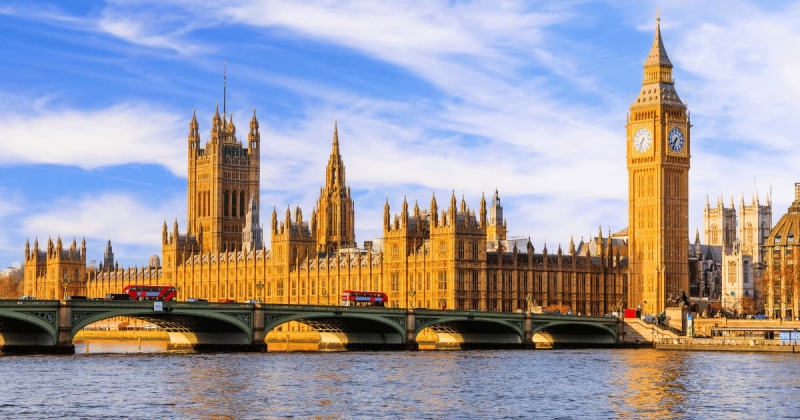
The United Kingdom brings together England, Scotland, Wales, and Northern Ireland, each offering its own character and history. London is one of the most visited cities in the world, with landmarks like the Tower of London, Buckingham Palace, and world-class museums. Beyond the capital, travelers find medieval castles, charming smaller towns, and landscapes that range from the rugged Scottish Highlands to the coastlines of Wales.
What makes the UK a great country to visit is its mix of past and present. You can walk through historic sites that shaped western civilization in the Middle Ages, then step into a lively pub for a taste of modern culture. With so many cities and regions packed into a relatively small area, the UK is a destination where every day can feel completely different from the last.
Top Things To Do in the United Kingdom
- See London’s landmarks: Big Ben, the British Museum, and the London Eye are essential for first-time visitors.
- Hike in the Scottish Highlands: Wide-open views, lochs, and rugged beauty make this one of Europe’s most memorable landscapes.
- Tour medieval castles: From Windsor Castle to Edinburgh Castle, the UK is full of fortresses with fascinating history.
- Visit the Giant’s Causeway in Northern Ireland: A UNESCO World Heritage Site with striking basalt rock formations.
- Enjoy Wales’ national parks: Snowdonia and Brecon Beacons offer hikes, waterfalls, and fewer crowds compared to more tourist-heavy regions.
Best Places To Stay in the United Kingdom
- Budget: Z Hotel Shoreditch in London offers compact, modern rooms near restaurants and nightlife. Prices average $108 to $364 per night.
- Mid-range: Apex Grassmarket Hotel in Edinburgh has castle views and easy access to the old town. Rates usually range from $217 to $498 per night.
- Luxury: The Goring in London is a five-star family-run hotel near Buckingham Palace, with rooms starting around $747 to $1,575 per night.
What To Know Before Visiting the United Kingdom
Trains connect major cities, but renting a car is often the best way to explore rural areas, such as the Scottish Highlands or Wales. The weather can be unpredictable at any time of year, so packing layers and a raincoat is always a wise precaution. The UK uses the pound sterling, not the euro, and tipping is generally 10–12% in restaurants. For fewer crowds, shoulder seasons in spring and autumn are often the best time to visit.
10. Iceland
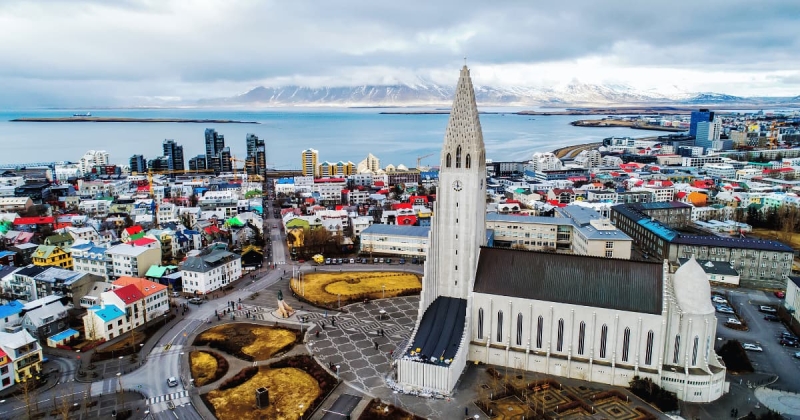
Iceland is one of the most striking European countries to visit, known for its otherworldly landscapes and natural phenomena. From geysers and waterfalls to volcanic black-sand beaches, the scenes here are unlike anywhere else in the world. It’s also one of the best places to witness the Northern Lights in the winter months or the Midnight Sun in summer, making it a destination that shines year-round.
The country is a favorite among travelers seeking rugged beauty and outdoor adventure. Road trips along the Ring Road offer a glimpse of glaciers, hot springs, and small towns set against dramatic backdrops. At the same time, Reykjavik provides a lively capital with fine dining, music, and a welcoming vibe.
Top Things To Do in Iceland
- Soak in the Blue Lagoon: This geothermal spa near Reykjavik is famous for its milky blue waters rich in minerals.
- Drive the Golden Circle: A route that includes geysers, Gullfoss waterfall, and Thingvellir National Park, all within a day’s trip from the capital.
- Chase waterfalls on the South Coast: Skógafoss and Seljalandsfoss are two of the country’s most beautiful natural sights.
- Explore glaciers and volcanoes: Jökulsárlón Glacier Lagoon and the surrounding Vatnajökull National Park are unforgettable highlights.
- See the Northern Lights: Visit during the winter months for the best chance of spotting the Aurora Borealis.
Best Places To Stay in Iceland
- Budget: Kex Hostel in Reykjavik offers dorms and private rooms in a quirky industrial setting, priced from $60 to $189 per night.
- Mid-range: Hotel Vík í Mýrdal, located on the south coast, offers modern rooms with views of black sand beaches and nearby mountains. Rates typically range from $212 to $507 per night.
- Luxury: The Retreat at Blue Lagoon is a luxury resort built into a lava field with private lagoon access. Rooms start from $400 to $1,200 per night.
What To Know Before Visiting Iceland
Traveling in Iceland can be expensive, so be sure to budget carefully for food, fuel, and accommodations. Renting a car is the best way to see the country, especially if you want to explore beyond Reykjavik. Weather changes quickly, so packing layers and waterproof gear is essential. The best time to visit depends on your preferences: the summer months offer long days and easier travel, while winter brings the Northern Lights and fewer crowds.
11. Croatia
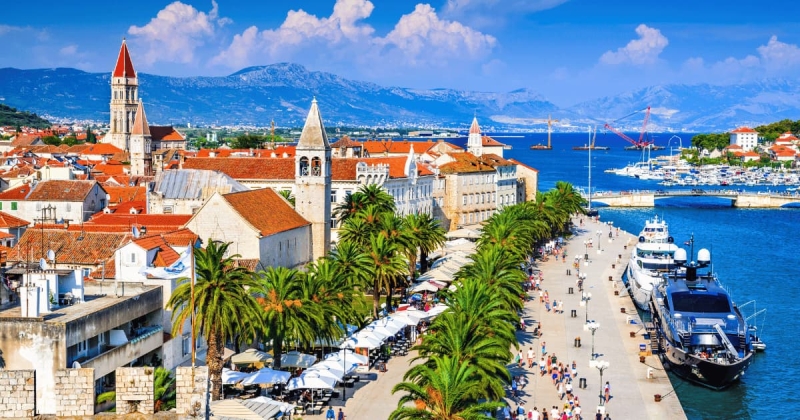
Croatia has quickly become one of Europe’s most popular destinations, thanks to its stunning Adriatic coastline, historic cities, and picturesque islands. Dubrovnik, with its stone walls and historic Old Town overlooking the sea, is a highlight for many travelers, while Split combines Roman ruins with easy access to nearby islands. Beyond the most visited spots, Croatia also offers quieter beaches and smaller towns where you can enjoy the Mediterranean lifestyle with fewer crowds.
The country features a mix of fascinating history, outdoor activities, and natural beauty. From sailing between islands to hiking in national parks with waterfalls and lakes, Croatia appeals to travelers who want more than just a city trip. Its position on the Mediterranean coast also makes it a strong option for those who enjoy beach life alongside cultural discovery.
Top Things To Do in Croatia
- Walk Dubrovnik’s old town walls: These fortifications offer sweeping views of the city and the Adriatic Sea.
- Explore Diocletian’s Palace in Split: A UNESCO World Heritage Site where Roman ruins blend with modern life.
- Island hop in the Adriatic: Hvar and Korčula are popular, but lesser-known islands like Vis offer fewer crowds and relaxed charm.
- Visit Plitvice Lakes National Park: Wooden walkways connect turquoise lakes and waterfalls in one of Croatia’s most stunning landscapes.
- Sail along the Dalmatian coast: Chartering a boat is one of the best ways to experience the crystal clear waters.
Best Places To Stay in Croatia
- Budget: Hostel Angelina Old Town in Dubrovnik is situated in a historic stone house. Dorm beds and private rooms range from $80 to $228 per night.
- Mid-range: Cornaro Hotel in Split offers comfortable rooms near Diocletian’s Palace, with a rooftop terrace. Prices average $185 to $920 per night.
- Luxury: Hotel Excelsior Dubrovnik overlooks the Adriatic with private beach access and elegant suites. Rates start around $251 to $1,557 per night.
What To Know Before Visiting Croatia
The summer months bring cruise ships and heavy crowds to Dubrovnik and Split, making visits during spring or fall often more enjoyable. Ferries connect the islands, but schedules can be limited outside of peak season. The euro is now the official currency, replacing the kuna in 2023. Croatia is also more affordable than many Western European destinations, though prices rise sharply in major tourist hubs during July and August.
Look out over the captivating port of Split, Croatia, where the turquoise water meets the terracotta roofs of the city. We invite you to explore the stunning ruins and formidable stone towers of Diocletian's Palace that guard the harbor. Uncover the magic of this ancient Roman city on the Adriatic Sea.
12. Czech Republic
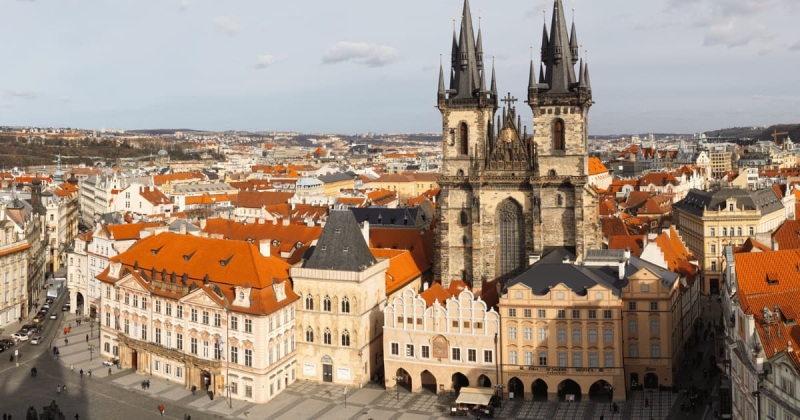
The Czech Republic is a country that blends medieval charm with modern culture, making it one of the most rewarding places to visit in Eastern Europe. Prague, its capital, is renowned for its historic Old Town Square, Gothic spires, and lively beer halls. But beyond Prague, travelers find castles, spa towns, and smaller cities that showcase the country’s fascinating history and local traditions.
It’s also one of the more affordable countries in Europe, making it an appealing destination for longer stays. Whether you want to admire stunning architecture, enjoy hearty food, or simply relax in smaller towns with fewer crowds, the Czech Republic offers plenty of ways to experience central Europe without breaking the bank.
Top Things To Do in the Czech Republic
- Stroll through Prague’s old town: The Astronomical Clock and Charles Bridge are highlights that capture the city’s historic character.
- Tour Prague Castle: One of the largest castle complexes in the world, it overlooks the city, showcasing centuries of history.
- Relax in Karlovy Vary: This spa town has been welcoming visitors since the Middle Ages, with hot springs and grand architecture.
- Sample Czech beer: The country is known for its brewing traditions, and locals often say they “love beer” as part of their culture.
- Visit Český Krumlov: A fairy-tale small town with a castle, winding streets, and views over the Vltava River.
Best Places To Stay in the Czech Republic
- Budget: Sophie’s Hostel in Prague offers stylish dorms and private rooms near Wenceslas Square. Rates average $67 to $179 per night.
- Mid-range: Hotel Bellevue in Český Krumlov is set in a historic building close to the castle. Prices range from $104 to $466 per night.
- Luxury: Augustine, a Luxury Collection Hotel in Prague, is housed in a former monastery near Charles Bridge. Rooms start around $403 to $873 per night.
What To Know Before Visiting the Czech Republic
Public transport is excellent in Prague, with trams and metro lines connecting most of the city. English is widely spoken in tourist areas, but less so in smaller towns, so a few phrases in Czech can be helpful. The local currency is the Czech koruna, not the euro. Winters are cold and atmospheric, especially around Christmas markets, while spring and autumn offer mild weather and fewer crowds.
FAQs
The best time depends on your priorities. Summer months (June–August) bring warm weather and long days, but also higher prices and larger crowds. Spring (April–May) and autumn (September–October) are considered shoulder seasons, characterized by fewer crowds, comfortable temperatures, and lower costs. Winter (November–February) is ideal for visiting Christmas markets, skiing in the Alps, and witnessing the Northern Lights in Scandinavia.
France, Spain, and Italy consistently rank among the most visited countries in the world thanks to their mix of historic sites, cities, and famous landmarks. Germany and the United Kingdom also attract millions of visitors every year, while countries like Greece and Switzerland remain strong favorites for travelers seeking both culture and natural beauty.
For travelers who prefer smaller towns and less tourist-heavy destinations, the Czech Republic, Portugal, and Croatia are excellent choices. In popular countries, exploring lesser-known islands in Greece, villages in France, or inland regions of Spain can also provide a quieter experience.
Several countries combine both, but Italy, Greece, and Germany are notable examples. Italy offers Roman ruins alongside the Italian Alps, Greece pairs ancient temples with island landscapes, and Germany balances medieval castles with the Black Forest and Bavarian Alps.
